How to stop your shed smelling musty – 9 expert-approved methods to banish bad odors
Keep your shed fresh and clean, however you use it
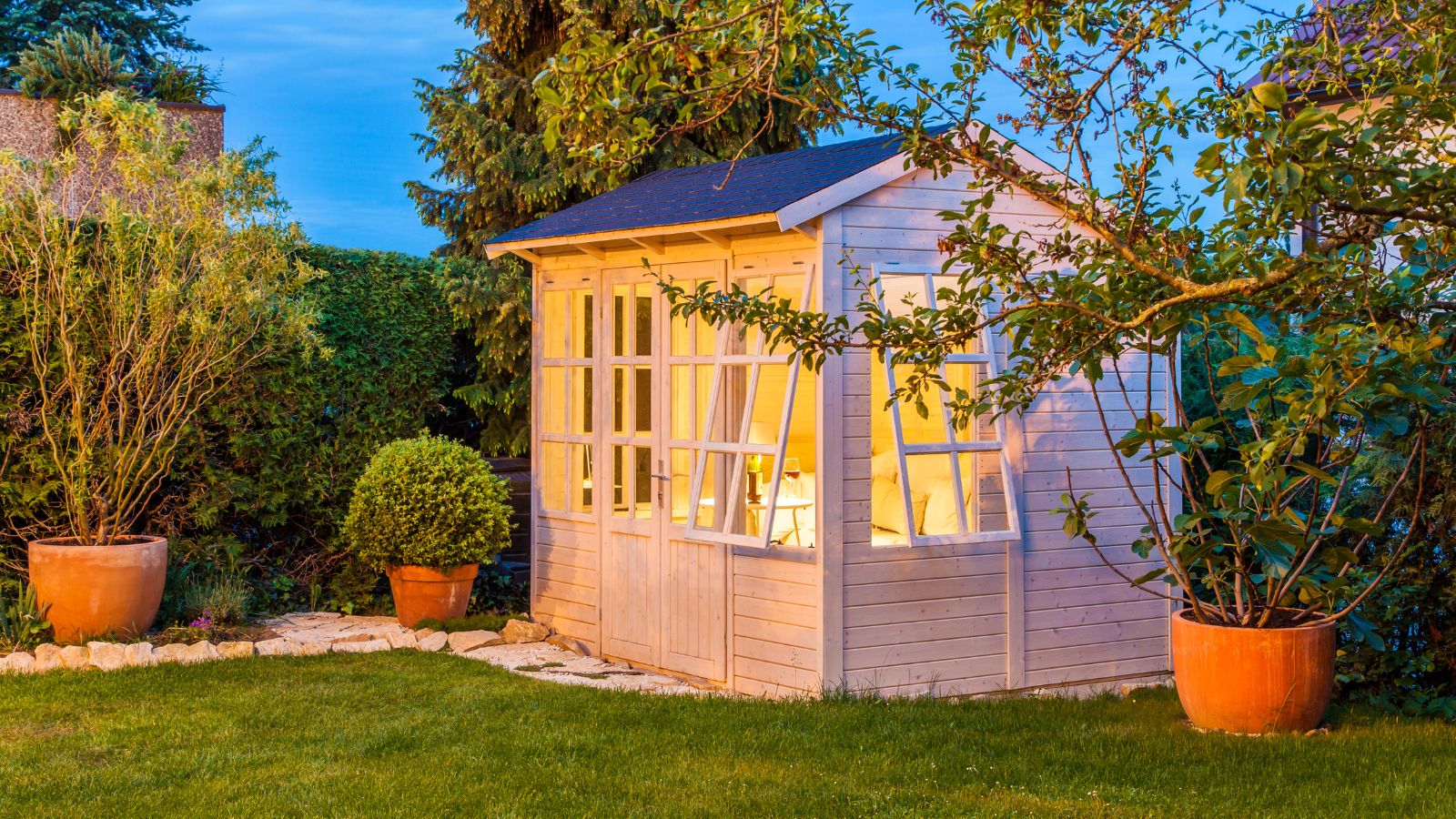

While it might just be where you store your gardening tools, spare plant pots, and lawnmower, your shed smelling musty is not only an annoyance – it could indicate some pressing problems.
From trapped moisture to unfound leaks, it's important to take action as soon as you spot or smell a problem, urge HVAC pros.
Here, they share their top tips for keeping your shed ideas clean and dry, with nine methods to ensure a fresh-smelling storage space.
Why might a shed smell musty?
To find out why a musty-smelling shed might be more worrisome than you think, I spoke to Kevin Goude, owner of First Choice Heating & Air. As it turns out, the reasons are unsurprisingly similar to why your house might smell musty.
He explains, 'A musty smell usually means moisture is trapped somewhere it shouldn’t be. Sheds are prone to this because they often have limited airflow, old or spilled chemicals, and temperature swings that cause condensation.
'Musty smells come from microbial growth, mold, mildew, even bacterial colonies, triggered by stagnant air, temperature swings, and organic material like dust, insulation fibers, or cardboard.
'Mold, mildew, or even damp insulation can quietly build up in corners or under stored items, releasing that telltale musty funk.'
Design expertise in your inbox – from inspiring decorating ideas and beautiful celebrity homes to practical gardening advice and shopping round-ups.
And, as Josh Mitchell, HVAC technician and founder of Air Conditioner Lab, adds, 'If that moisture doesn't have a way to escape, it settles into wood, cardboard, or fabric, and that's where the smell starts.'
So, how do you banish musty odors? Here are nine ways our pros recommend:
1. Seal gaps in and around your shed doors, windows and panels
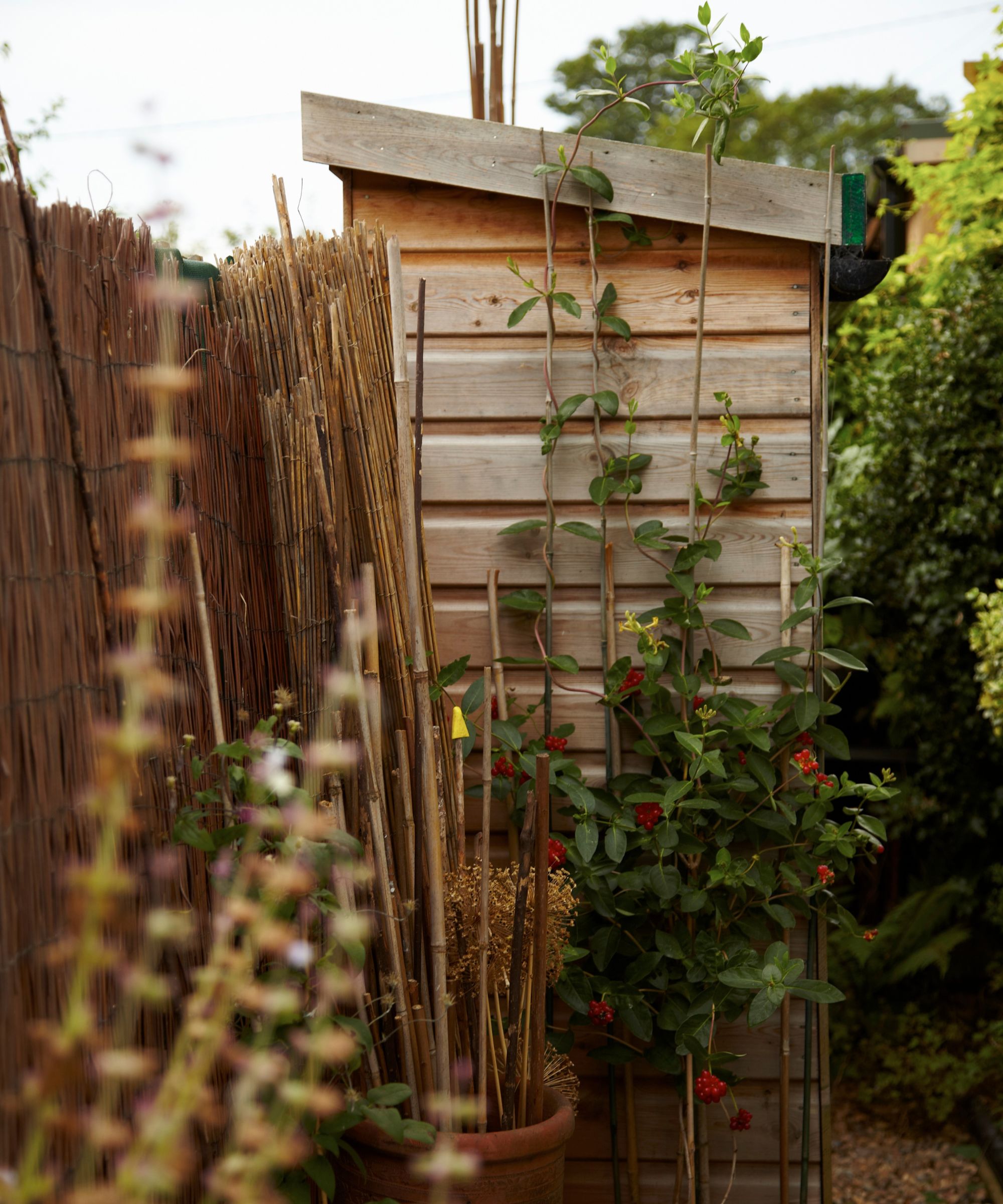
Begin by sealing out rainwater and moisture.
According to Josh Mitchell, HVAC technician and founder of Air Conditioner Lab, one of the best ways to address a musty-smelling shed is by sealing any gaps in the floor or around the base where water may seep in.
He explains, 'Rainwater can collect under the shed or leak inside without being noticed, especially if the structure sits directly on the ground.
'Adding a vapor barrier, such as a plastic tarp or heavy-duty landscaping fabric, underneath helps reduce ground moisture from creeping up through the floor. It's affordable, and installation takes approximately 20 minutes, depending on the shed's size.'
For this, we recommend using the bestselling ECOgardener Premium Landscape Fabric available at Amazon, which is eco-friendly, durable and super easy to install.
2. Ventilate your shed
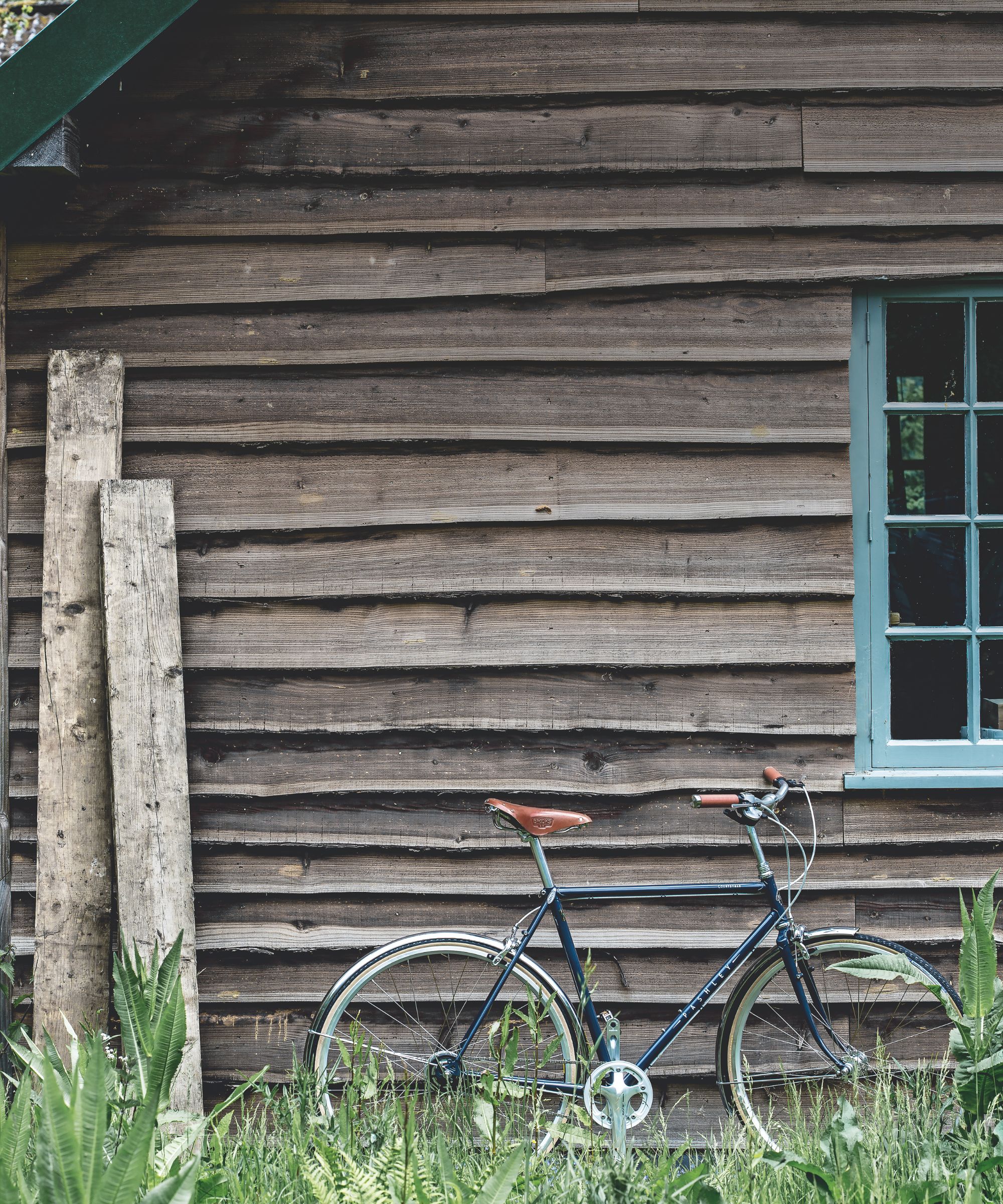
'Ventilation is key'
Next, says Chuck Woosley, general manager of The Bee, 'To get rid of that musty smell in a shed, ventilation is key.'
For this, Michael Zohouri, founder of Pyramid Eco, advises, 'Opening a window or leaving the shed door ajar on dry days can significantly improve airflow. This allows moist air to escape and helps the interior dry out more quickly.
'Regular ventilation disrupts the still, damp conditions that encourage mold to grow. Even a few hours of fresh air each week can help reduce musty smells and keep things fresher over time.'
The same applies when trying to get rid of musty smells in the attic, and is why you should open windows in winter, too. Both indoors and outside, opening windows and doors is an effective way to ventilate your home without increasing energy bills.
In particularly severe cases, says HVAC pro Kevin, you can install a roof vent or turbine, just like in attics. 'It pulls hot, moist air up and out, especially in summer,' he explains.
3. Replace cardboard boxes
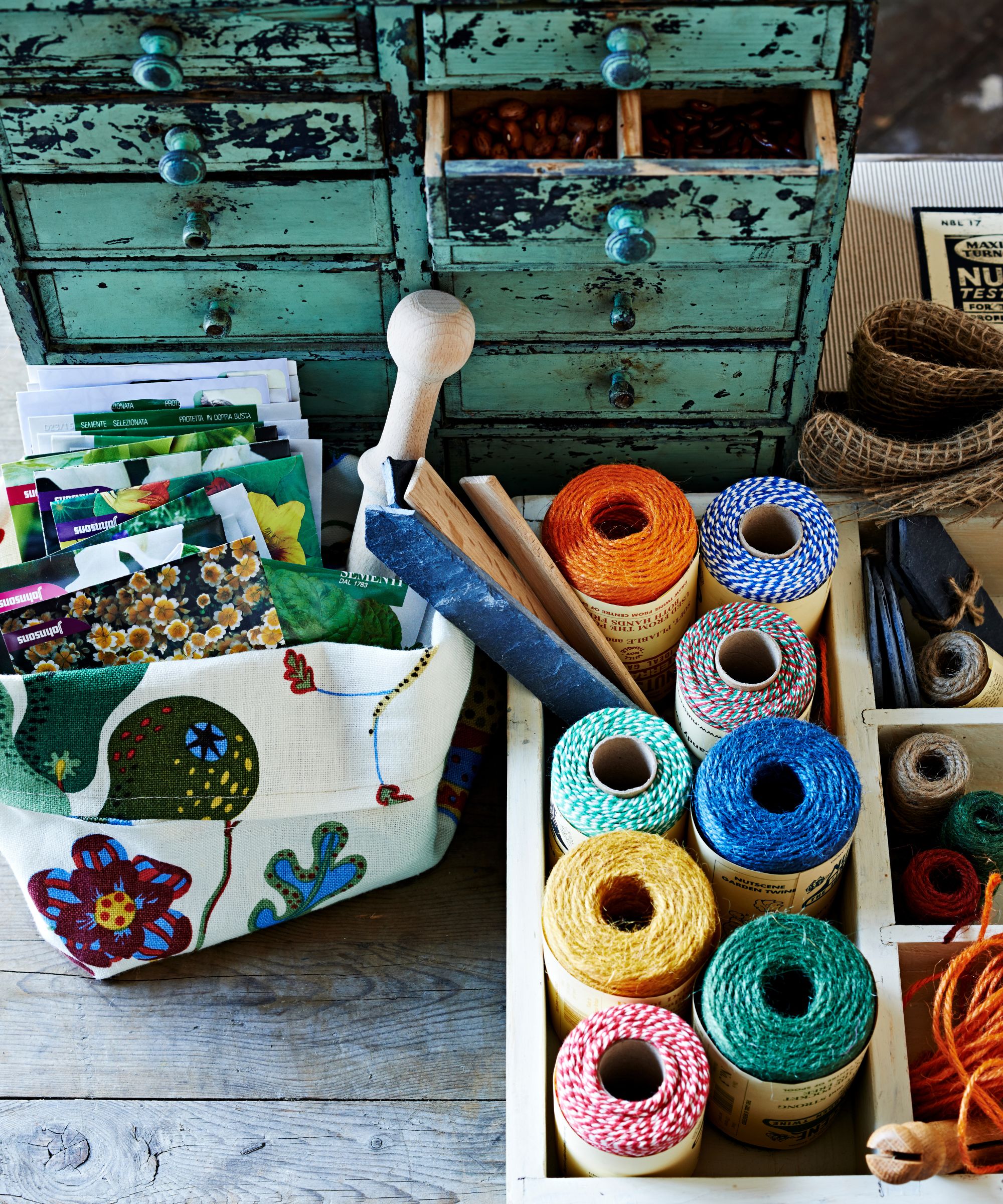
Switch to more moisture-proof storage solutions, like these
You might think reusing cardboard boxes is a brilliant way to be more sustainable at home, and it is – just not in your shed, says HVAC technician Josh, who recommends replacing them with plastic bins.
He explains, 'Cardboard absorbs moisture, even when it feels dry. That buildup becomes a breeding ground for mold and mildew. Switching to sealed plastic containers can improve storage conditions within a week. If you're storing items long-term, avoid using materials that absorb moisture.'
There are also a number of things you should never store in cardboard, so why not reuse cardboard in the garden instead?
And, if you are looking to overhaul your organization, the IRIS USA 13 Qt Stackable Plastic Storage Bins with Lids available at Amazon are a brilliant buy, coming in a convenient pack of six.
4. Keep your shed's indoor humidity in check
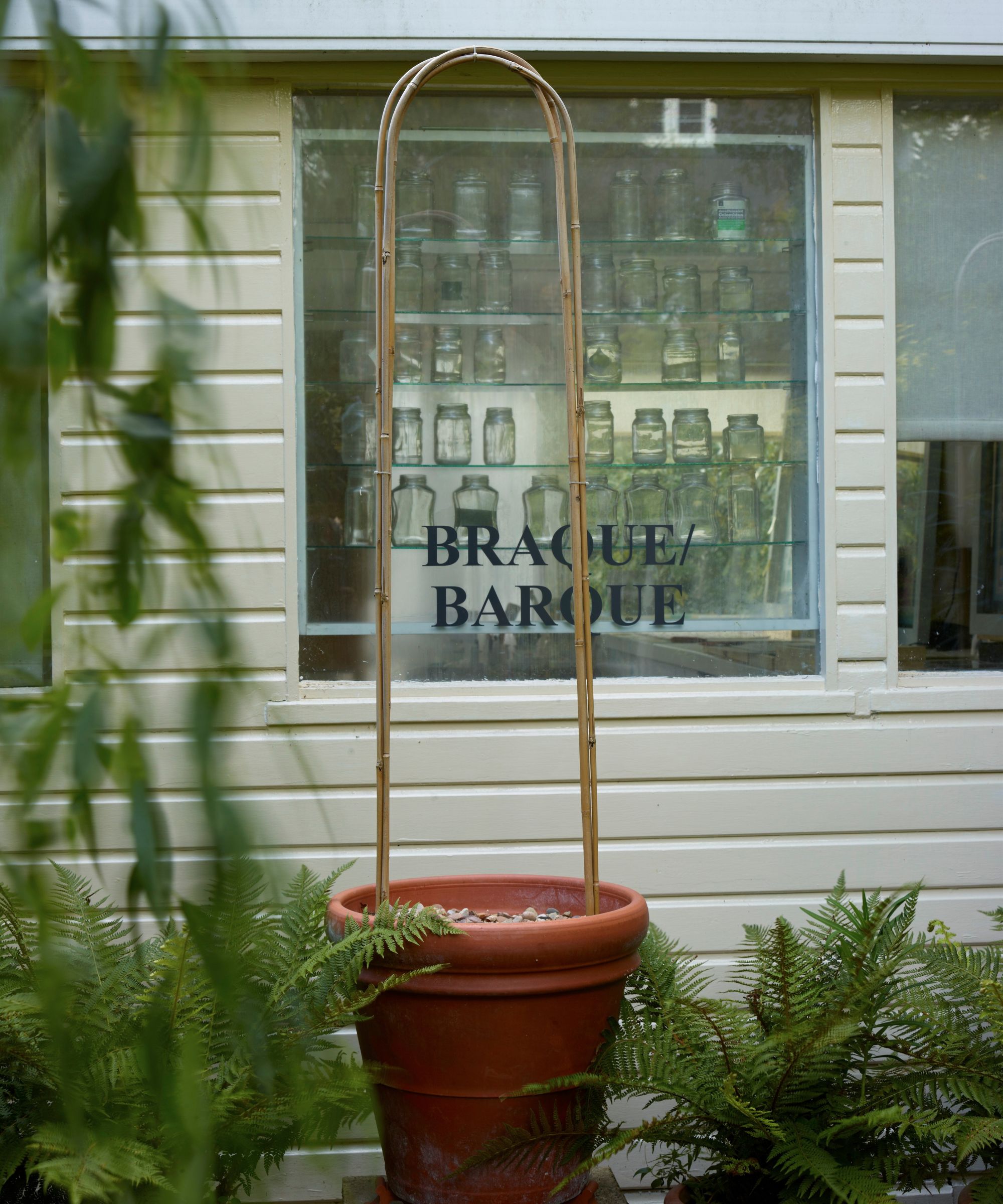
Reduce humidity with a dehumidifier or moisture absorbers
To stop your shed smelling musty, you'll also need to reduce humidity, which follows the same protocol as reducing your home's humidity.
For this, Ben Uscilla, owner of Evergreen Heating & Cooling, advises, 'Dehumidifiers are going to be the best solution. The root of the problem is that you've got to get the moisture out.'
We've got a handy buying guide on the best dehumidifiers out there, and our top budget pick is the ALROCKET Dehumidifier available at Walmart.
Additionally, recommends Michael, products like the Vacplus Moisture Absorbers available at Amazon are easy to use, and require no electricity.
You should also, says Josh Locker, training and technical support manager at AUX AIR USA, keep an eye on indoor levels with a hygrometer, such as the bestselling AcuRite Indoor Digital Thermometer & Hygrometer available at Walmart. 'Aim for 30% to 50%,' he recommends.
5. Place odor absorbers inside your shed
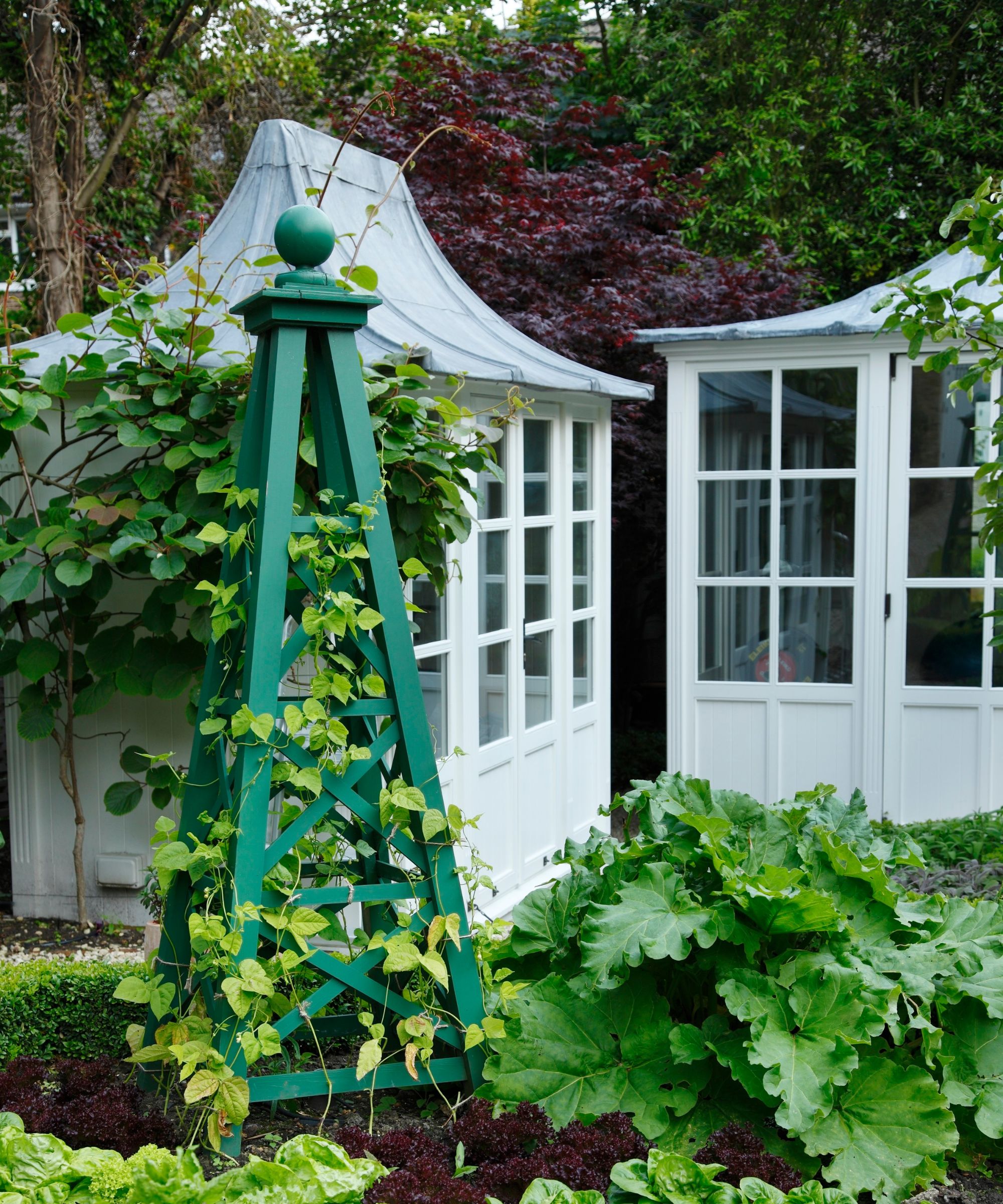
You don't have to spend lots for effective moisture absorbers – baking soda and activated charcoal both work brilliantly
While moisture absorbers may help to curb musty odors, using additional odor absorbers will boost freshness in your shed space.
'For odor control, moisture-absorbing products like calcium chloride or baking soda [available at Walmart] can be effective, especially in smaller sheds,' says HVAC technician Josh. 'I leave a few open containers in different corners and change them every month or so.
'If the smell is strong, I'll use activated charcoal. It pulls odors from the air and doesn't take up much space.'
In fact, activated charcoal is one of nature's best deodorizers to use around your home, and we recommend the NIYIKOW Charcoal Bags Odor Absorber available at Amazon.
6. Declutter your shed
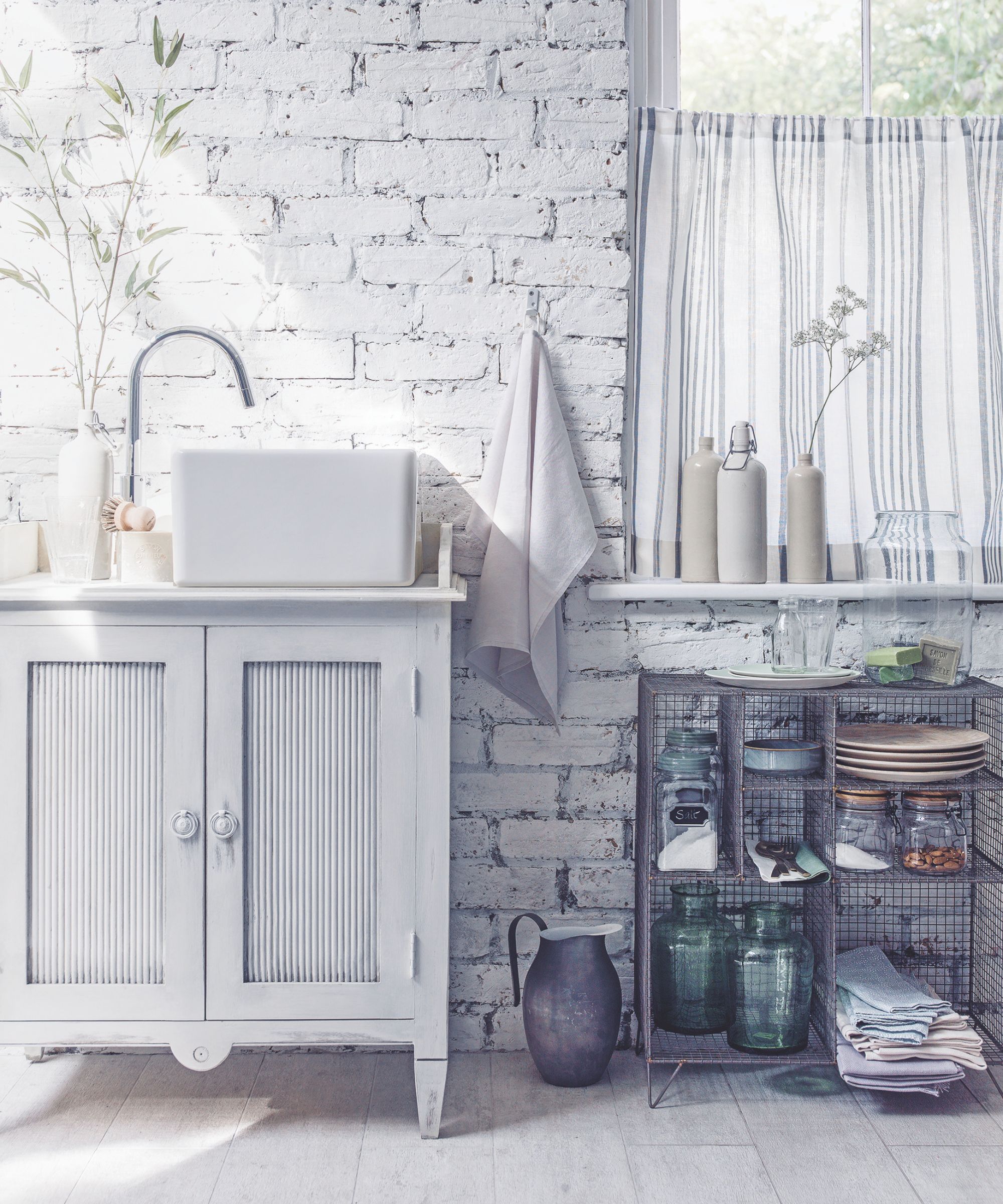
Even if you're 'shed' is so much more than a storage space, like this, you'll still need to take steps to stop musty smells
When was the last time you decluttered your shed and sorted through its storage ideas?
'Stored items like cardboard, paper, fabric, and half-empty paint cans are magnets for moisture,' says HVAC expert Michael. 'They hold dampness and can harbor mold spores without you realizing it.
'Go through your shed every few months and remove anything you don’t need, especially items that have absorbed water. The more open space you create, the easier it is to keep the air circulating and surfaces dry.'
7. Reseal your shed's flooring
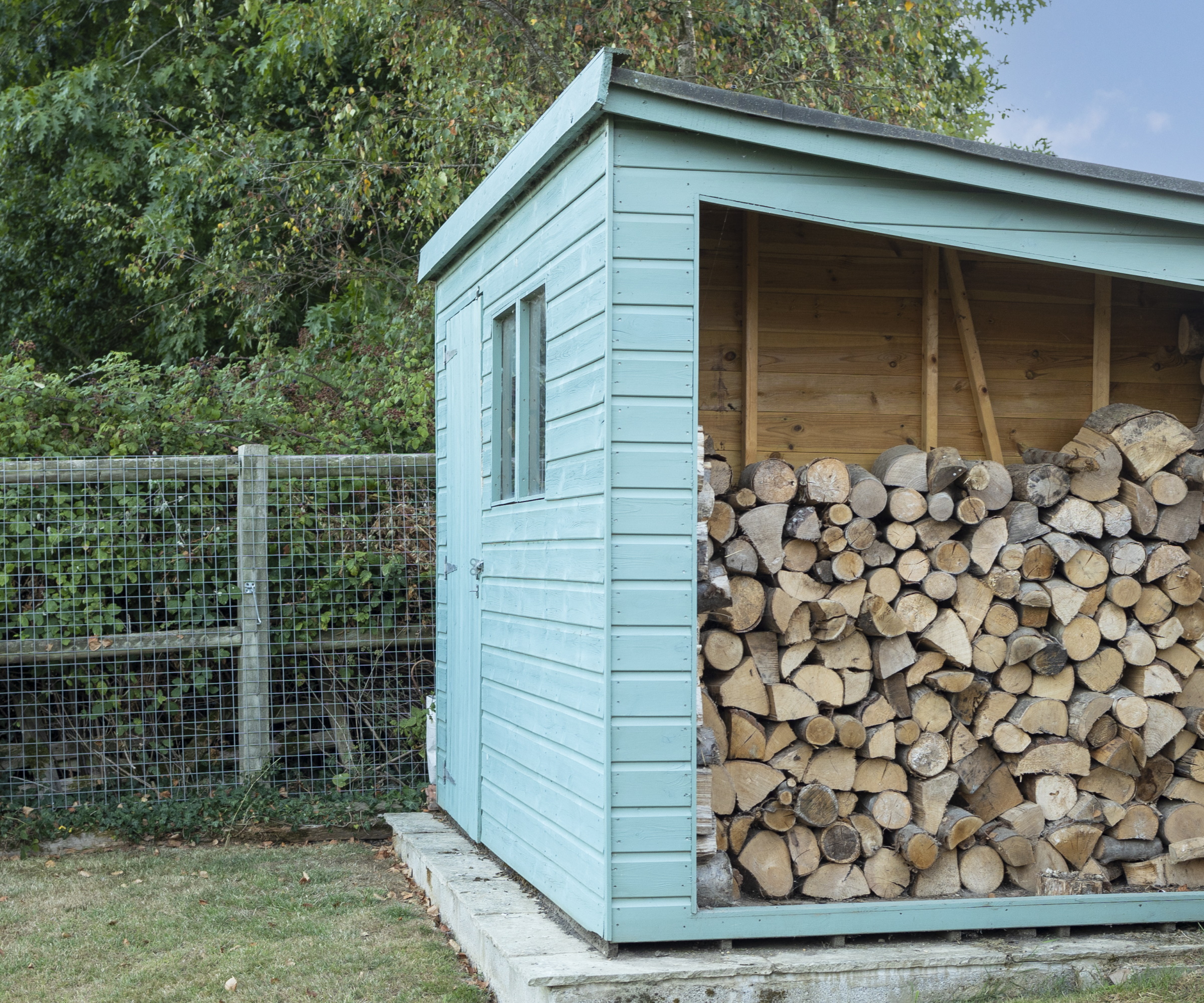
Resealing floors blocks odors and prevents moisture absor
'If the shed has a wood floor, sanding and sealing it can help block lingering odors that have soaked into the boards,' recommends Josh. 'Unfinished wood retains moisture and attracts mold spores.
'A single coat of sealant [such as HOPE'S 100% Pure Tung Oil available at Amazon], or even paint with a mold-resistant additive, can help reduce those odors over time. It also makes cleaning the floor easier in the long run.'
8. Clean your shed regularly
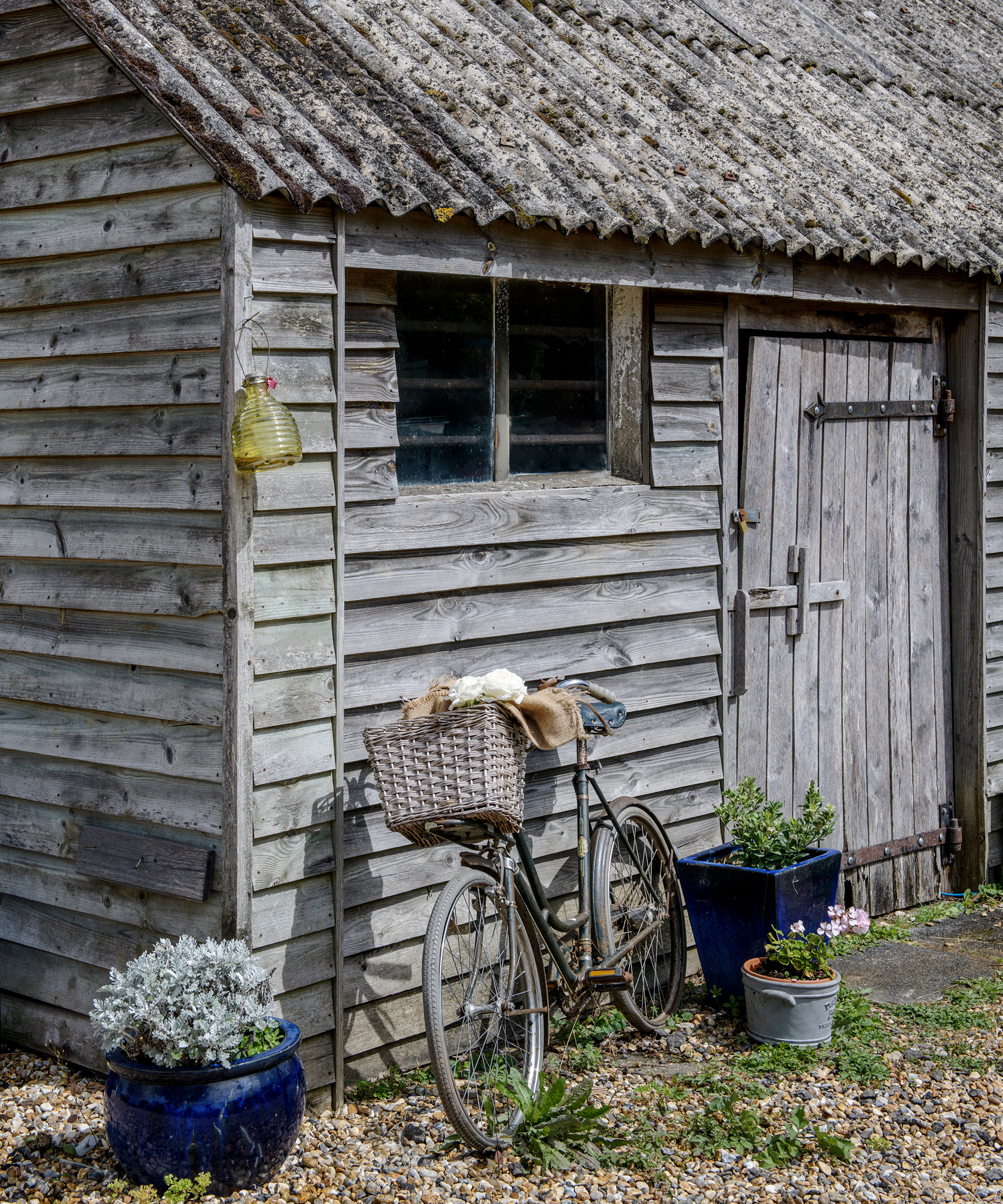
Keep your shed clean and mold-free
Speaking of cleaning, there's no better way to tackle musty odors in your shed than cleaning with vinegar, say our HVAC pros.
'If you have wood surfaces, a quick wipe-down with vinegar or a mild cleaning solution can keep mold and mildew at bay,' says Chuck, general manager of The Bee, as vinegar works to kill mold.
Use a spray bottle, such as the Mainstays Empty Plastic Spray Bottle available at Walmart, and dilute your solution in an approximately 1:1 ratio.
Afterwards, adds HVAC pro Michael, 'Use an anti-fungal spray to help prevent it from coming back,' such as the Concrobium Mold Control Spray available at Amazon, which also helps to further prevent musty odors.
9. Check your shed's roof
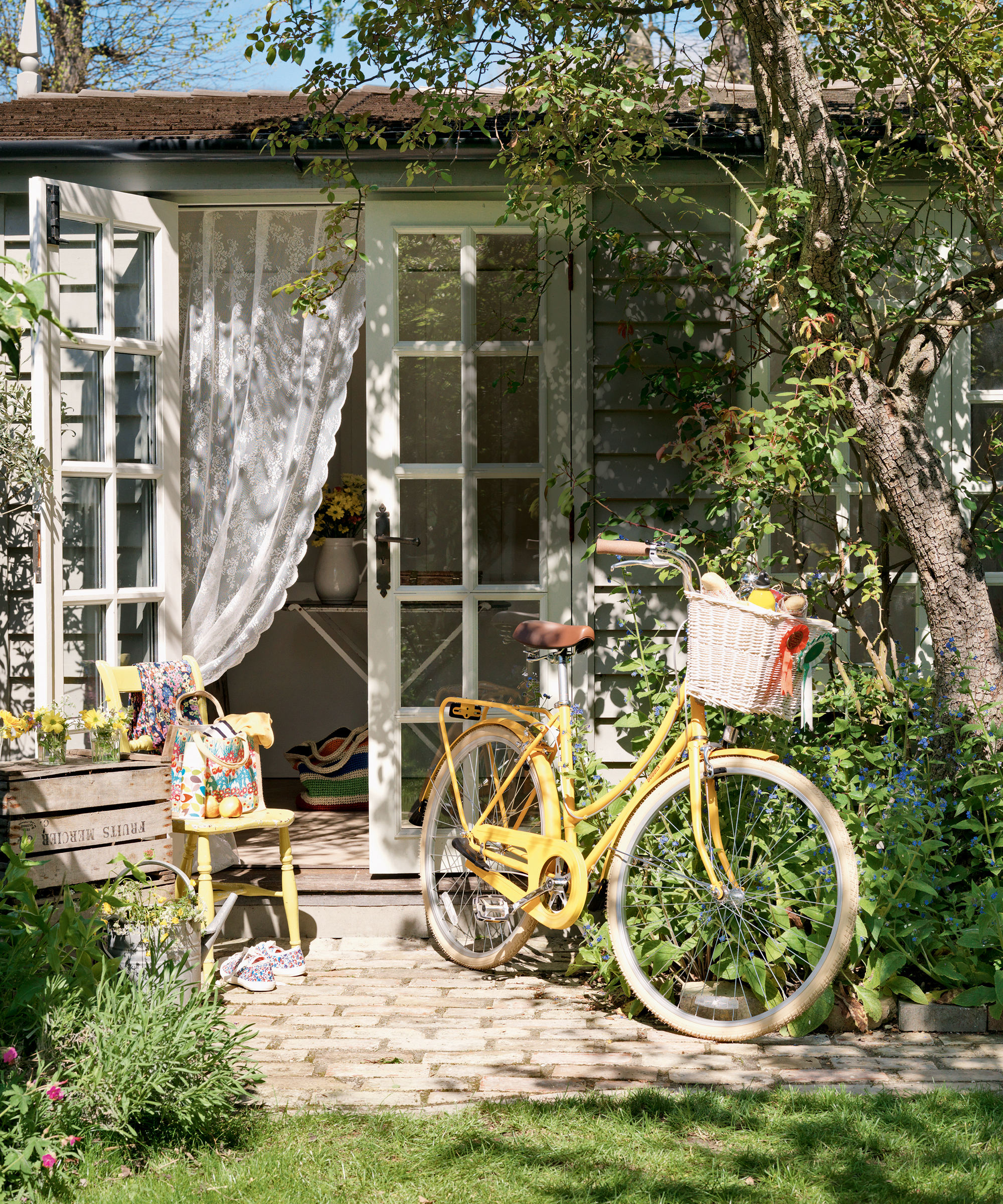
Check roofing for signs of moisture
Finally, says Josh, 'I also suggest checking your roof. If the roof is leaking, even slightly, water might be dripping inside and causing hidden moisture issues in the walls or ceiling.
'A water stain or soft spot in the roof paneling is an early sign. Patching those up or replacing damaged panels will stop new moisture from getting in.'
You can use caulk, such as the GE Advanced Silicone Caulk available at Amazon to seal any smaller cracks or gaps, which is both shrink and crack-proof.
What to shop
All prices were correct at the time of publication.

This hygrometer features high accuracy and a quick refresh, with a smart design that can magnetize to your fridge for ease of use.
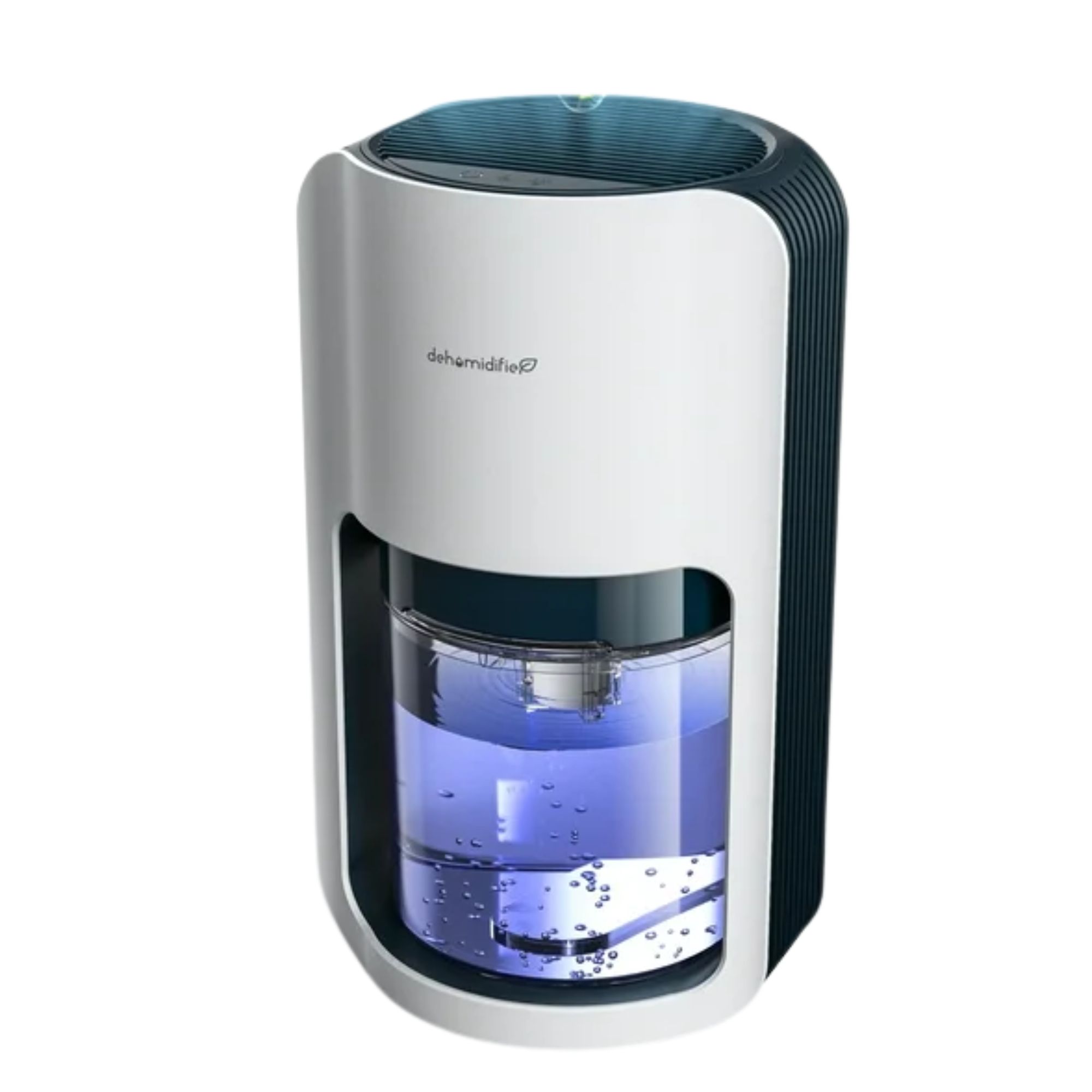
This small but mighty dehumidifier features a super simple one-button control switch, ultra-quiet technology, and an auto-off function.
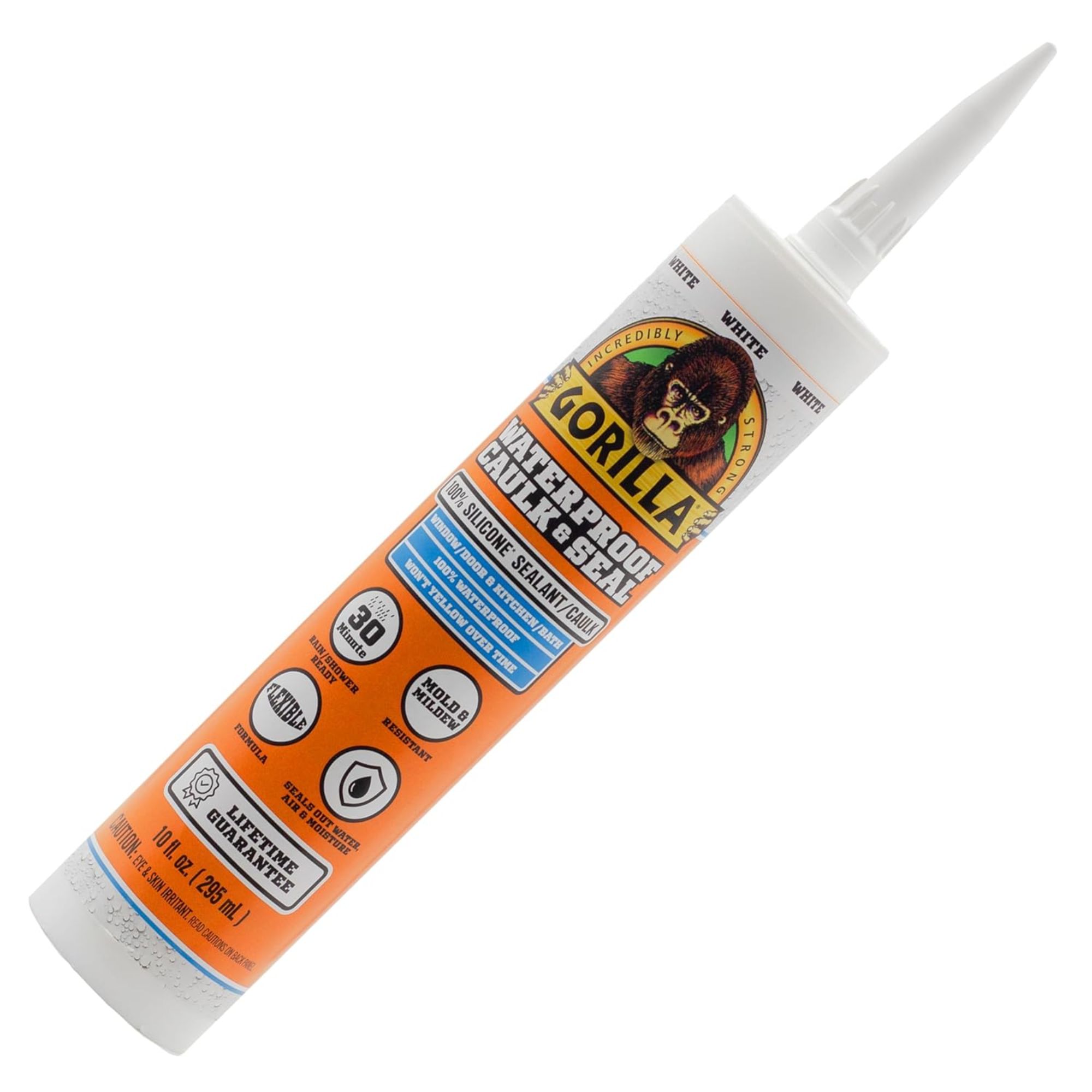
This silicone caulk is ready for water exposure in as little as 30 minutes, and effectively seals out air, water, and moisture.
Meet our experts

Michael is the founder of Pyramid Eco, a company which focuses on energy efficiency and healthier indoor environments. He has extensive hands-on experience addressing ventilation, insulation, and air quality issues in homes of all sizes, including why sheds may be smelling musty, and how to deal with it efficiently.

Air Conditioner Lab was founded by HVAC and tech enthusiast Josh in 2014, as a way for him to document his findings on home air conditioners and all things HVAC, including tackling bad odors in both indoor and outdoor spaces.
Chuck is the general manager of The Bee, a Zephyr portfolio brand servicing HVAC customers in the Denver metro area. He brings over 30 years of experience in the industry to his current role as general manager.

Kevin is the owner of First Choice Heating & Air, which specializes in HVAC and air quality. Kevin is not just a company leader; he has hands-on experience in HVAC, including installing and troubleshooting smart thermostats.
If you're in need of some help with the decluttering step when it comes to getting your shed in order, why not try employing the FhiFho tidying method every time you walk into or out of the space.

Ottilie joined Homes & Gardens last year, after finishing a Master's in Magazine Journalism at City, University of London. With previous contributions in Livingetc and Motorsport Magazine, she produces content for the Solved section on the website, focusing on clever tips and tricks to keep your home beautiful, organized, and clean, with particular expertise on all things home fragrance. She also has a Master's degree in English Literature and History of Art from the University of Edinburgh, where she developed a love for inspiring interiors and architecture.
You must confirm your public display name before commenting
Please logout and then login again, you will then be prompted to enter your display name.